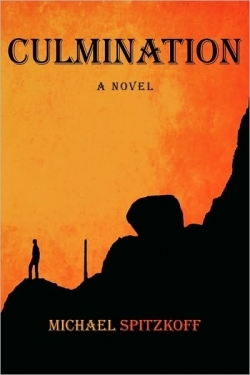
Culmination
In Culmination, Michael Spitzkoff casts John Sullivan as the roguish anti-hero who inevitably evolves into a hardened criminal. Sullivan plays out the role of a greedy soul driven by a dream to make it rich through a life of crime. Yet, he is not even an anti-hero. He is neither an avenger of an injustice nor overtly psychopathic. He is not simply the brooding rebel or disaffected youth. Sullivan has succumbed to owning any consciousness of right and wrong. Except for a valorous nature and undying loving regard for his mother, there is little else redeemable about him. He is an enterprising loner with a cold and calculating mind.
At the outset, Sullivan’s struggles will elicit the reader’s sympathy. Here is a boy growing up in the early 1960s in the slums of New York with hopes of escaping the despair that has condemned his longshoreman father to destitution and drudgery. Sullivan seeks a quick out to a better life. He is the quintessential anti-hero in the fashion of a Tony Montana or Michael Corleone. By the late ‘60s, Sullivan is a petty criminal hustling for money. But he is nabbed during a car theft. Out of sympathy, Lt. Andredi of the NYPD (good mentor and close friend of Sullivan’s father) offers John a choice: jail or Vietnam. Off to Vietnam he goes, joining a special-forces unit. It doesn’t take him long to resume his life of crime, this time as a drug smuggler. After the war, Sullivan returns home to bigger and “badder” things. Not surprisingly, he is busted for dealing cocaine and lands in prison where he meets Ben Lucarello (bad mentor). The two plan a multi-million dollar heist of the US Treasury.
As a thriller, Culmination is a satisfying, fast-paced, compulsive read with waves of action building to an unpredictable ending. The masterminding of a heist from the impenetrable Bureau of Engraving and Printing is impressive. The plan for the heist is nothing short of ingenious. Interestingly, a real heist of the BEP was pulled off in 1953. Sullivan also devises a shrewd plan to cover their tracks. Sullivan’s suspenseful flight from the law recalls John Dillinger, that legendary outlaw who furiously fled from his pursuers. Similarly, Sullivan’s capture seems inevitable, but his fate leaves the reader guessing until the very end.
Spitzkoff’s anti-hero is both fascinating and disturbing. His dark, enigmatic charisma pervades the story’s plot on every page. He puts up no resistance to the lure of crime; he simply gives in. He is not conflicted about his choices; he is discontented, defiant. It’s not a matter of opinion whether Sullivan has crossed the line from anti-hero to villain. Thus, as a classic rise and fall tale of an anti-hero, the story is predictable. But Spitzkoff resists sentimentalizing him; some fans of the dark anti-hero archetype will thus find Sullivan seductive and even endearing. Unfortunately, the author never deeply probes Sullivan’s dark psyche, which would have helped to better understand such depraved behavior.
Reviewed by
Gary Klinga
Disclosure: This article is not an endorsement, but a review. The publisher of this book provided free copies of the book and paid a small fee to have their book reviewed by a professional reviewer. Foreword Reviews and Clarion Reviews make no guarantee that the publisher will receive a positive review. Foreword Magazine, Inc. is disclosing this in accordance with the Federal Trade Commission’s 16 CFR, Part 255.
